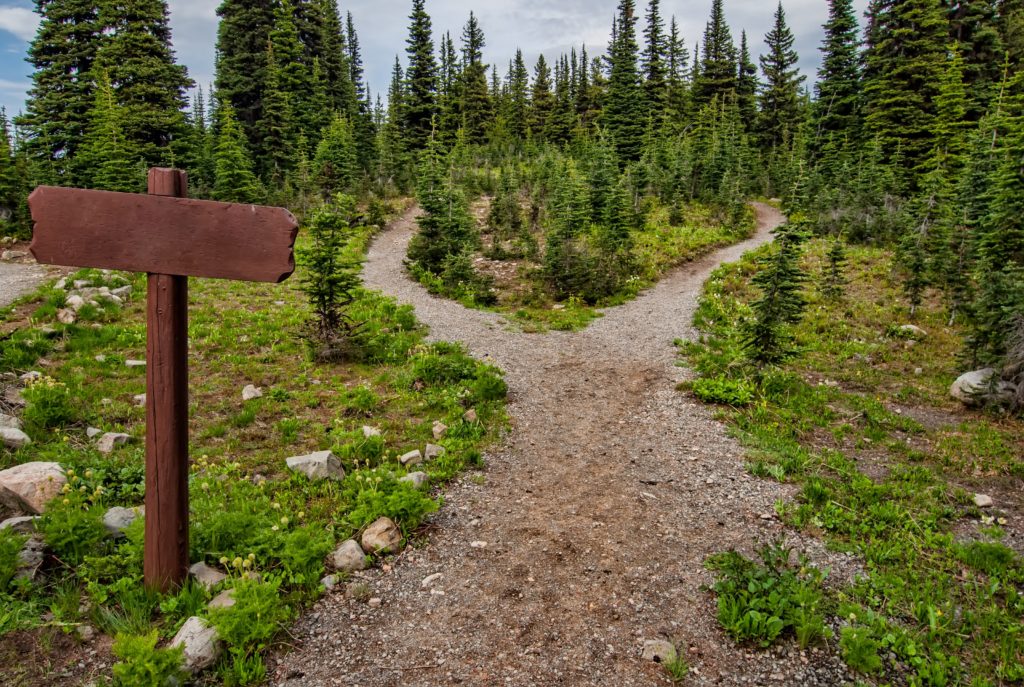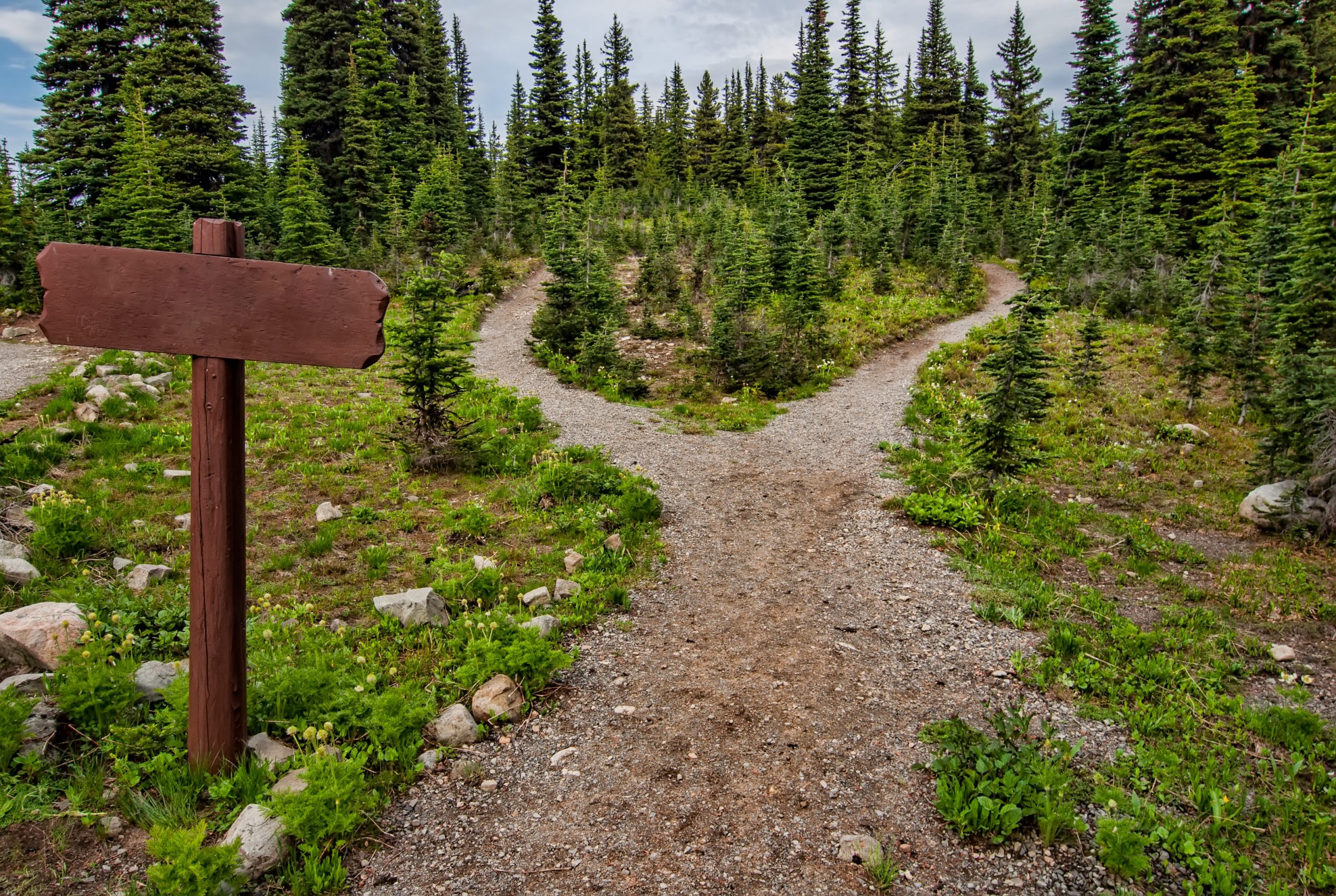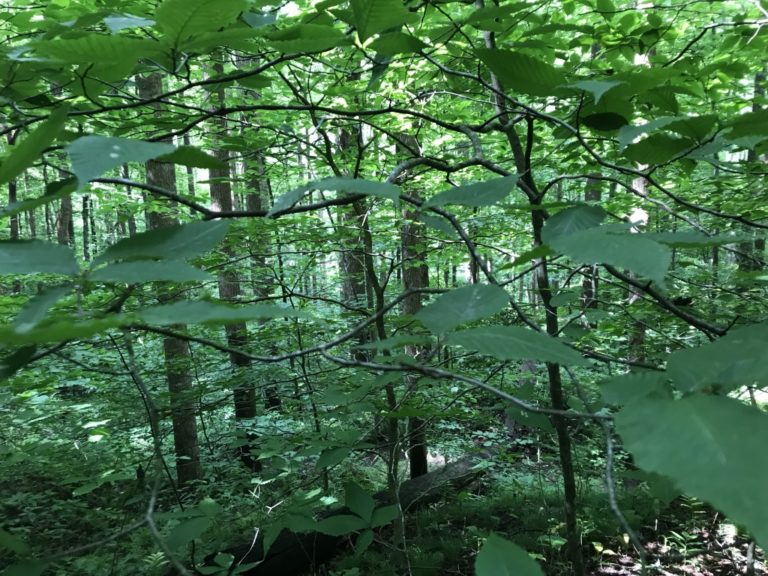Autopilot, Attention & Adventure

Pivoting at the switchback, I wondered just exactly why I’d thought the thigh-burning Hellroaring Trail was a good idea. Sure, the descent had been smooth and the destination was stunning. And I’d known, as we made our way down the path that swagged across the mountainside like a string of twinkle lights on a Christmas tree, that the return trip would present a challenge. This hike, down to a backcountry steel suspension bridge that spanned the gorge of the Yellowstone River, was one of the first my husband and I had taken together. Its description—moderately challenging with a steep descent—was accurate enough. Still, reading about a trail’s level of difficulty is one thing.
Walking it out is another.
Difficulty level wasn’t even the primary concern raised about this trail in some of the guidebooks. Further down the path, it gets dicey in a different way. Hellroaring is a major trail that intersects with several others. Past the bridge, it’s marked by places of transition, each one an opportunity for hikers to lose their way. Pay attention, the guides warn.
Paraphrased, this is no place to walk on autopilot.
Autopilot, Attention, and Adventure
Straight, well-worn paths are easy to follow. We don’t have to watch the trail or even look around and we’ll still make it to our destination. The ones that are characterized by forks, intersections, and social trails—not so much.
None of us sets off on the trail or into our day hoping not to arrive at our destination. Walking through the usuals of everyday life on autopilot doesn’t seem risky because the ruts are well-worn and we know the way. And without the complication of forks, intersections, or the occasional social trail, it seems benign enough. Plus, attention is hard and autopilot is easy.
If an adventurous life starts with an adventurous mindset, which is the better choice–attention or autopilot?
Trails and Transitions
It’s May, a month I’ve heard called the mother of all transitions. I think it’s true. May isn’t a gradual slope. It’s steep and switchbacked—with hairpin corners on which weather, light, and schedules swing. It’s easy to take the hard turn and let autopilot slingshot us toward the usual stuff of summer without pausing to pay attention to our trajectory and terrain. This is as true in life as it is on the trail: transitions are no place for autopilot.
We’re used to living with distraction and comfortable with a certain degree of drift. We’re used to missing out. We’ve accepted it. But the things that come with the ease of autopilot also come at a cost. Missing out is an easy way to get lost. Proverbs tells us a better way: Ponder the path of your feet; then all your ways will be sure. (Proverbs 4:26 ESV)
Occasional assessment—the pondering of the path—offers us a better way.
Maybe we’ve drifted and need to realign our trajectory with our destination. Maybe we’re holding on to a tradition that has outlived its season. Maybe, instead of this being the year for the big thing, it’s the summer to strengthen our causal adventure muscles. (Read what Armando wrote about casual adventures.) Consider taking a little time to look at the terrain you’ve been traveling before drifting into the next season on autopilot.
The Next Step: Ponder Your Path
Reflection Questions for pondering our path for the next season, no matter what it is:
- Where am I now? (This could be an actual location, a physical or emotional state, a decision, a situation, etc.)
- Where am I in relationship to where I want to be?
- What course corrections, if any, do I need to make so I can bring myself (and my family—if applicable) through this season and to the next in the best possible condition?
- What do I need to pick up or put down as I prepare to move forward?
If you spend some reflecting on your next season, let us know what you discover. We’d love to hear.
Happy trails ~
Natalie






